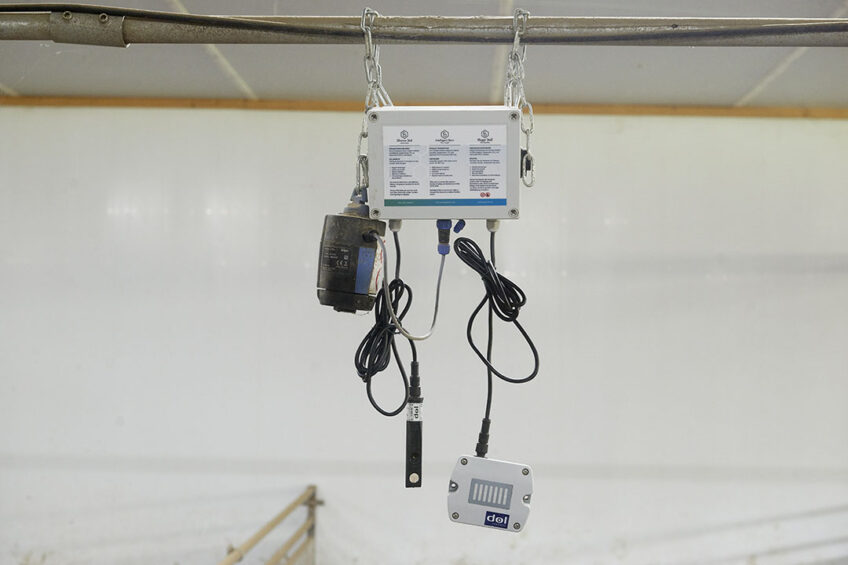Precision poultry production improves welfare and sustainability

Incorporating sensors and precision poultry production facilitates data collection, welfare assessment and informed decisions. However, precision poultry production faces various challenges, including technical problems with sensors and devices, and issues pertaining to data governance. Research, testing and the validation of technologies in commercial settings is key.
It is estimated that by 2050, the global demand for poultry meat will be approximately 181 million tonnes, which represents an increase of 120.7% compared with 2005. However, environmental concerns, labour shortages and increasing biosecurity requirements will pose a challenge for producers in monitoring the production, health and welfare status of individual birds. Poultry producers therefore need to make various changes in poultry production systems to meet the rising demand for poultry products while taking into account farm sustainability and ensuring high standards of animal welfare.
Recent advances in technology and engineering tools and materials, such as advanced sensors and sensing devices, data processing and machine learning methods, provide effective tools to enable the poultry industry to monitor welfare sustainability.
Precision poultry production
Precision poultry production is defined as the monitoring and management of poultry production based on the principles and engineering technologies of automatic data acquisition, access and processing. Data is collected from various sources using detection sensors, such as cameras, force platforms and microphones, and compiled in a central database. The data is then analysed in real time to create an automatic monitoring system to manage performance, health and welfare. The next step is developing and validating a machine learning and data processing algorithm to understand the experimental data.
Monitoring environmental inputs
The poultry house environmental inputs (including temperature, air velocity, ventilation rate, litter quality, humidity, carbon dioxide and ammonia concentrations) are essential factors affecting health and welfare. Relative humidity can be monitored using relative humidity sensors. Multi-sensor systems assess barn ventilation system function and track temperature, air velocity and differential pressure in poultry houses.
A prediction model using temperature, relative humidity, carbon dioxide and ammonia sensor inputs, combined with bird weight data, can predict broiler weight up to 72 hours in advance, thus allowing producers to take action sooner if bird weight is projected to be low. Robots can improve bird health and activity levels by inducing bird movement. In addition, robots can aerate the litter and apply disinfectants to the litter on the poultry house floor and thus decrease the incidence of Salmonella infection.
Digital imaging
Digital imaging captures the movement patterns of birds in poultry houses to measure their activity as an indicator of welfare status. Digital imaging can also be used to assess gait score, lameness, bird weight and stocking density in relation to feeding patterns and bird response to different environmental conditions. In addition, digital imaging can be used as an indicator of infection with microorganisms, such as Campylobacter, which typically does not induce clinical signs in chickens.
Using optical flow patterns, a technique evaluating differences in brightness in a series of images, infected chickens could be detected within 7-10 days after hatch. Footpad dermatitis can be addressed using digital imaging techniques in the slaughter line at the processing plant, recognising if the poultry house litter needs to be changed to reduce the incidence of footpad dermatitis.
Vocalisation analysis
Vocalisation analysis uses the sounds that birds produce as an indicator of health and welfare. When breeder hens are deprived of nesting, they have higher frequencies of distress-related calls. As broilers grow larger, the peak frequency of vocalisations decreases. Stressors such as feather pecking are associated with a higher incidence of squawking and vocalisation. Vocalisation analysis of chickens with infectious bronchitis virus can detect infection before clinical signs are evident.
Infrared thermal imaging
Infrared thermal imaging is a minimally invasive technique to assess poultry welfare. Infrared thermal imaging is used to determine the surface temperature of a bird’s body as an indicator of heat stress. In addition, infrared thermal imaging can rapidly detect the presence of laying hens to automatically stop ozone treatment of poultry houses when hens enter the area being treated. This method can further measure the eggshell temperature of developing embryos, allowing average embryo temperature to be determined which could be important for future management strategies.
Raman spectroscopy
Non-contact Raman spectroscopy is an imaging technique that assesses the sex of chicken embryos by analysing the spectroscopy profile of circulating embryonic blood in eggs. This technique only requires the removal and replacement of a portion of eggshell. Using this technique allows male embryos to be removed prior to hatching, thus avoiding the welfare issues related to the culling of day-old male layer chicks and decreasing costs and labour associated with the manual sex determination of day-old embryos.
Challenges and gaps
Environmental sensors have some limitations, including the need for regular sensor calibration in a multi-sensor system. Traditional placement of environmental sensors in poultry houses on walls or in an elevated position may not reflect the true environmental conditions of the poultry house airspace. In a commercial poultry house, background noise interferes with vocalisation analysis. Furthermore, more data regarding the age-related patterns of sound production needs to be used to train systems for vocalisation analysis for welfare monitoring to increase its accuracy for infectious disease diagnosis.
Digital imaging techniques are not able to capture enough detail for accurate assessment of footpad dermatitis lesions. Plus, larger-scale studies, more measurements and especially refined software are needed for an accurate, reliable system for the farm environment.
Join 31,000+ subscribers
Subscribe to our newsletter to stay updated about all the need-to-know content in the poultry sector, three times a week. Beheer
Beheer











 WP Admin
WP Admin  Bewerk bericht
Bewerk bericht